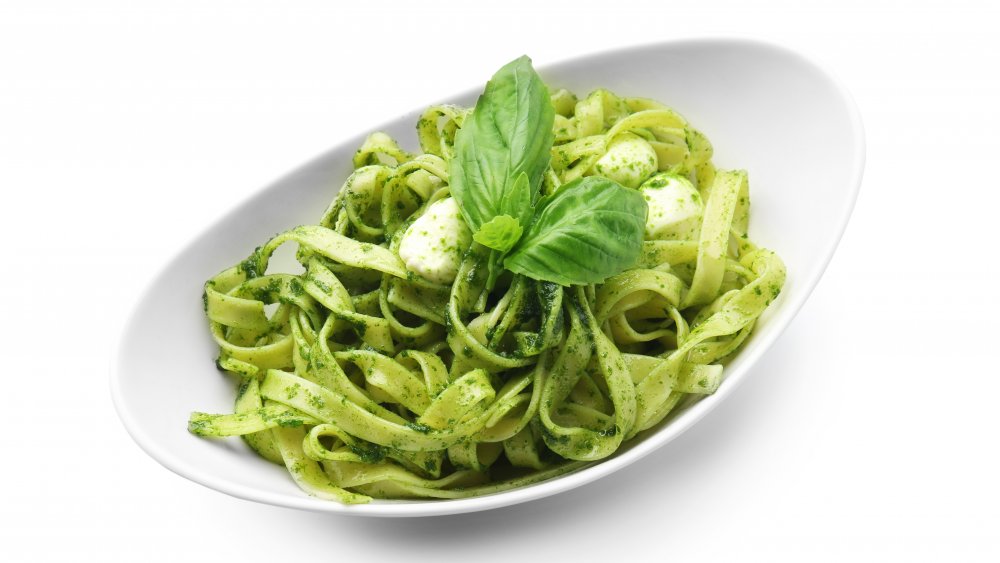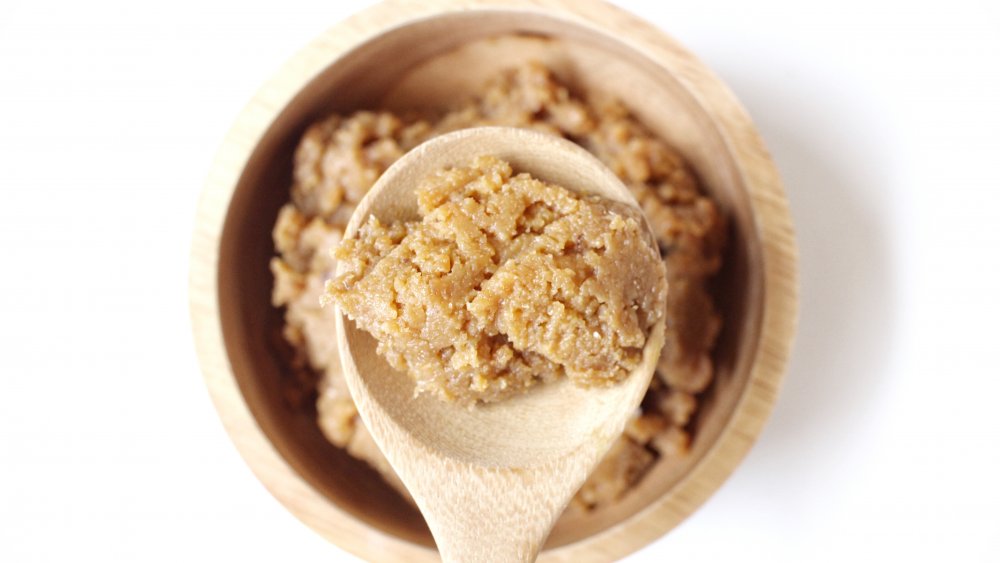The Secret Ingredient That's Missing From Your Pesto
Crushed fresh basil, finely grated parmesan, pine nuts, garlic, and olive oil are basic ingredients for a simple, delicious pesto sauce (via Cook Republic). All that's missing is a bit of miso paste, right? What's that now? While it might sound like a bizarre fusion experiment, this traditional Japanese ingredient can elevate and enhance lots of things, including marinades, dressings, and sauces, including your pesto (via Kitchn)!
Miso is a thick, savory paste with a rich history that dates back more than a thousand years in Japan. It's made by fermenting a soybean mash with salt and the starter culture aspergillus oryzae (via Science Direct). The most well-known use for the paste is in traditional miso soup, but, with a distinctive umami flavor and often described as "salty, earthy," and even a bit "funky" (via Bon Appetit), miso is worth trying in place of the salt your pesto recipe calls for.
Switch out the salt
Unlike mere salt, miso also adds dimension and depth to your pesto and delivers a richer, more savory, and well-balanced flavor. A little miso goes a long way. To incorporate miso into your next pesto sauce, just add it (one teaspoon per half-cup of pesto sauce) to your food processor or blender along with your other pesto ingredients. Taste, and then add more if you wish (via Kitchn).
What type of miso paste works best in pesto? The milder white miso, also known as shiro miso, is a good choice, as it will not overpower the delicate herbal flavor of your pesto (via Cook Republic). Yellow miso (shinshu miso) is a bit more intense while red miso (aka miso) is more pungent. Save aka miso for heavier meals, such as rich soups or glazes (via Bon Appetit). A bonus to adding miso to your pesto? It delivers B, E, and K vitamins, folic acid, and, because it's fermented, plenty of beneficial gut-friendly bacteria (via BBC Good Food).

